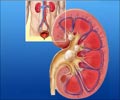Frequently Asked Questions
1. Which doctors perform percutaneous nephrolithotomy?Percutaneous nephrolithotomy is performed by an urologist.
2. What are the other procedures used to treat kidney stones?
Smaller kidney stones may pass out in the urine, especially if the patient drinks extra water, and usually do not require surgical treatment. Procedures used to treat larger stones include the following:
- Open nephrolithotomy, which is an open surgical procedure needing a 12 to 15 cms incision. Percutaneous nephrolithotomy has replaced the need for open surgeries in a large number of cases.
- Using a ureteroscope: The ureteroscope is inserted into the ureter through the urethra and urinary bladder and the stone which has moved down from the kidney to the ureter is either removed or is broken down with the help of laser.
- Extracorporeal shock wave lithotripsy (ESWL): In this procedure, the stone is broken down using shock waves into smaller pieces. These are then passed into the urine.
3. How long does the PCNL procedure taken?
The PCNL procedure usually takes one to four hours and depends on the size of the stone, the number and its location.
4. How long does it take to recover from the procedure?
It takes around a week to two weeks to recover fully from the procedure.
5. Does the procedure completely cure the patient of kidney stones?
The procedure removes large kidney stones. However, residual stones may remain in the kidney. Also, the underlying disease condition that could have given rise to the stone should also be addressed to prevent future stone formation.









